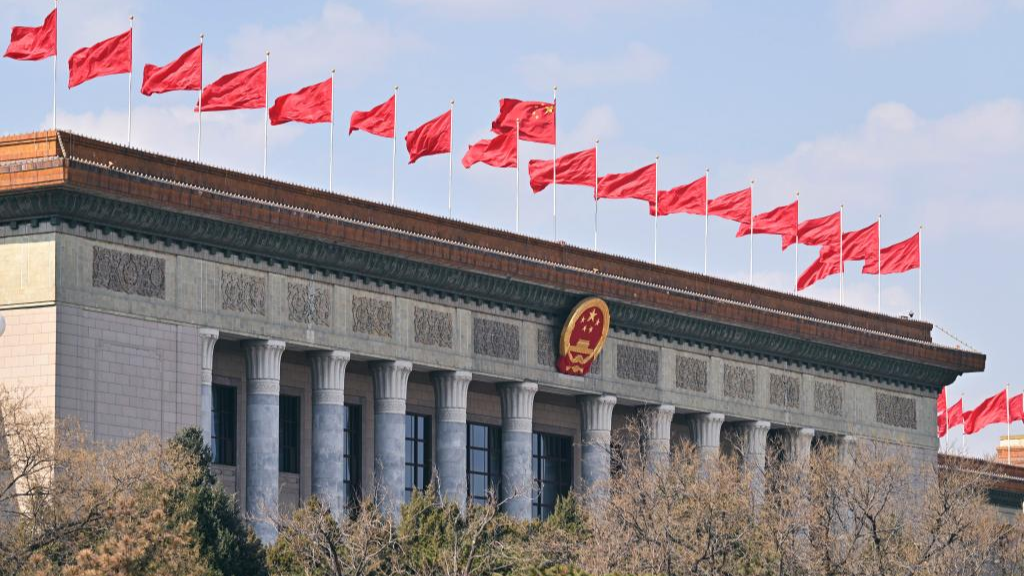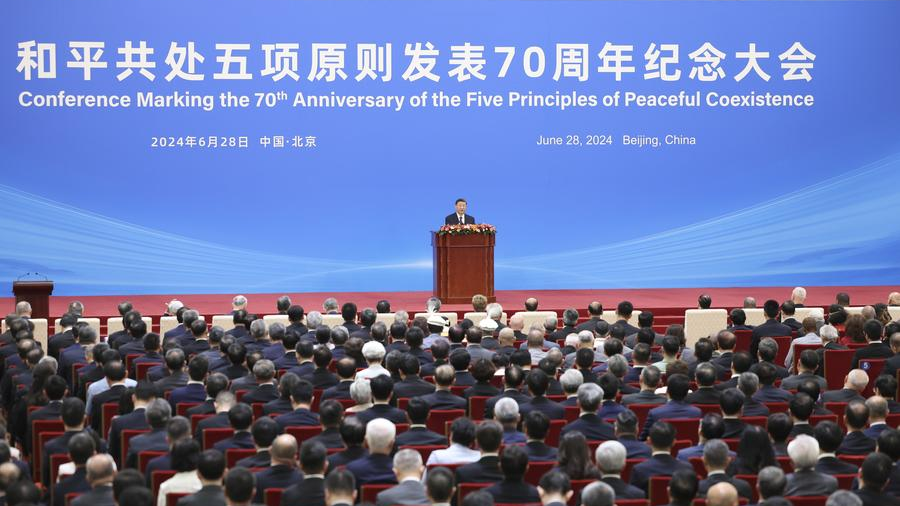On April 18, 1955, Bandung, Indonesia, slogans like “let the peoples of Asia and Africa unite” and “build a new world together” were plastered on the main streets of the Southeast Asian city. Leaders and representatives from 29 countries and regions on the Asian and African continents convened the first large-scale international conference not participated in by their colonial masters. It was the first time for “third world countries” to unite and map out their own future.
It was in the keynote speech by then Chinese Premier Zhou Enlai, head of the Chinese delegation, that the Five Principles of Peaceful Coexistence were put forward for the first time in a multilateral arena. The Five Principles of Peaceful Coexistence set out the right approach for interactions among states, and has become a prominent guideline in international politics ever since.
In the seven decades since, the Five Principles of Peaceful Coexistence have played a significant role in China’s diplomacy, such as conducting border consultations with India, normalizing relations with the Soviet Union, and establishing diplomatic relations with France, Italy, the United States, Japan, and other developed countries. They have been applied to handling relations between countries different in size, social system, and level of development, and as a result, they have gained recognition and support from an increasing number of countries.
The United Nations General Assembly, both in 1970 and 1974, endorsed the Five Principles into the UN system of laws, making them formally the basic norms of international relations.
The idea of Five Principles of Peaceful Coexistence is deeply rooted in Chinese culture. Coming from a peace-loving tradition of 5,000 years, the Chinese people appreciate a plain but profound truth – peace is a prerequisite for the development and prosperity of a country and a guarantee for the security and happiness of the people.
The ancient Chinese believed that “a warlike state, however big it may be, will eventually perish.” No matter in ancient times or the present day, China has never harbored any intention to colonize or invade other countries.
The grave ravages of wars that the Chinese suffered since the latter half of the 19th century instilled in them a deep understanding of the cruelty of war and the value of peace. Since its founding in 1949, the People’s Republic of China has never provoked a war. Instead, it is the largest troop contributor of peacekeeping operations among the permanent members of the UN Security Council and a major contributor to the UN’s peacekeeping budget. As Chinese President Xi Jinping pointed out at UNGA in 2017, no matter how strong its economy grows, China will never seek hegemony, expansion or sphere of influence.
Chinese culture also has a tradition of advocating that all countries, whether big or small, strong or weak, rich or poor, are equal. The ancient Chinese philosopher Confucius advocated that “gentlemen seek harmony but not uniformity.” Another Chinese philosopher, Laozi, the founder of Taoism, believed that countries no matter big or small should respect and treat one another well in order to accommodate each other. These made it clear that the Five Principles of Peaceful Coexistence, especially the connotation of mutual respect, equality and mutual benefit, were permeated in the culture gene of the Chinese nation, being passed down from generation to generation.
The China-proposed Five Principles of Peaceful Coexistence were based on China’s world view and its historical and cultural tradition. It is not a stopgap measure, let alone diplomatic rhetoric, but a contribution to the world by Chinese civilization.

The Great Hall of the People in Beijing, capital of China, March 11, 2024.
Nearly 70 years have passed since the Bandung Conference. The international landscape has changed quite a lot, and the ever-increasing global challenges call on us to take a fresh look at the Five Principles of Peaceful Coexistence at a time when their relevance is ascending instead of descending.
We have seen acquiescence to the persecution of more than 37,000 Palestinian civilians, dismissal of the right of developing countries to resist interference from the “developed democracies” in the name of human rights, denial of developing countries’ rights to develop, and distortion of global economic order through unjustified trade and financial tactics by developed economies, among others. For the international community, to coexist peacefully on an equal footing is not yet a mission accomplished but a goal that still needs to be pursued.
So, the value of the Five Principles of Peaceful Coexistence should never be overestimated, especially at a time when some countries’ mentalities of confrontation are turning globalization into fragmentation, cooperation into vicious competition, and unity into faction. We must bear in mind that we human beings live in the same global village, in which the flame of wars in Gaza and Ukraine have scorched the conscience of every man and woman; the heat in India, the floods in Brazil, and the drought in Africa will affect the daily food ration of each household; the rise of the far-right in Europe might provoke a trend of protectionism that will hinder transnational flow of materials and ideas; and the rapid evolution of AI has brought many challenges in science and technology as well as in ethics to human beings as a whole. If we bury our heads in the sand like ostriches are said to do and even refuse to coexist peacefully, chances are we might fail as a species.
Maybe we need to review the ancient Chinese wisdom for an answer: when crossing stormy waters, all we need to do is to row together. This is the only way that we can build a global community of shared future.
















